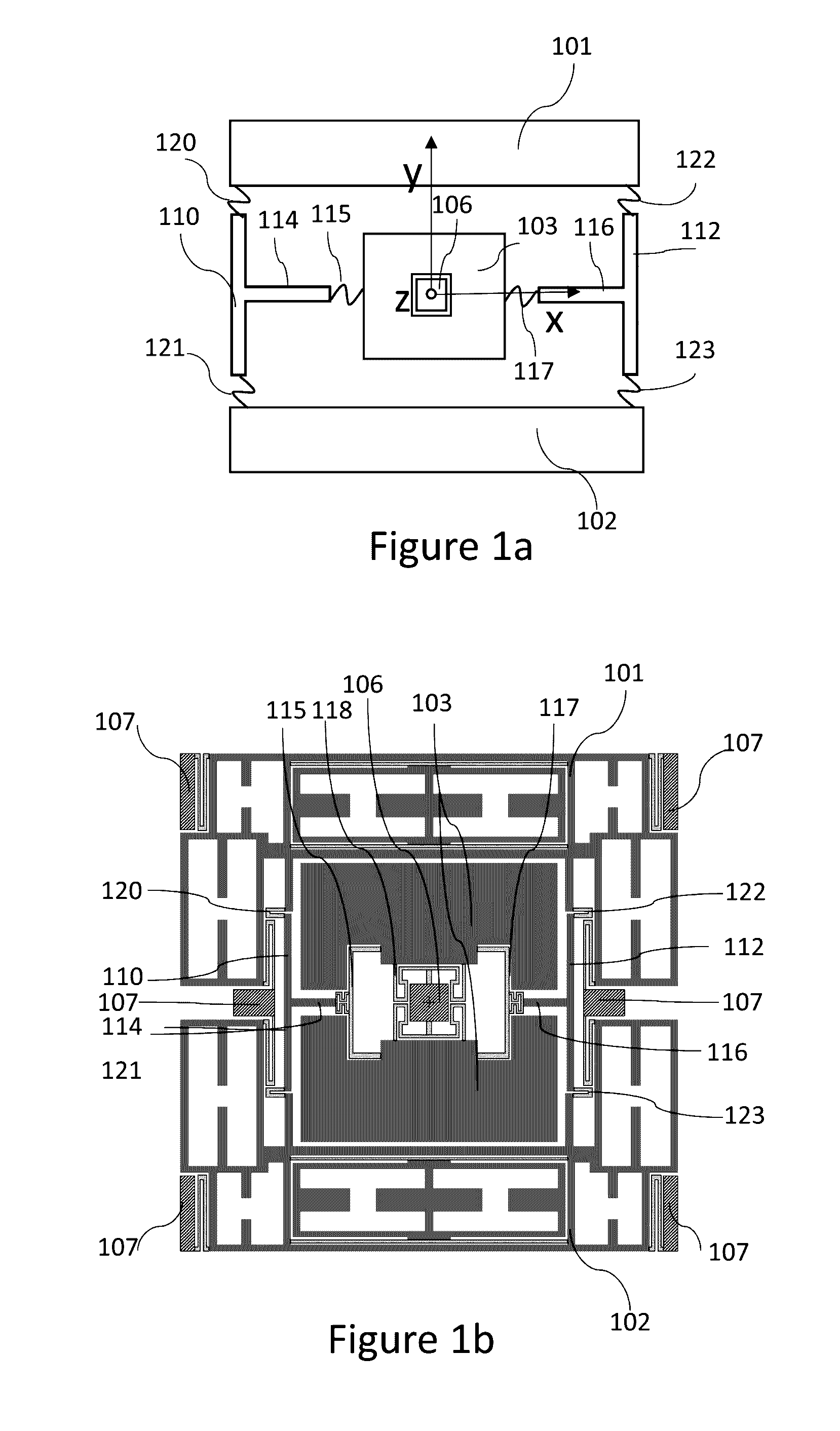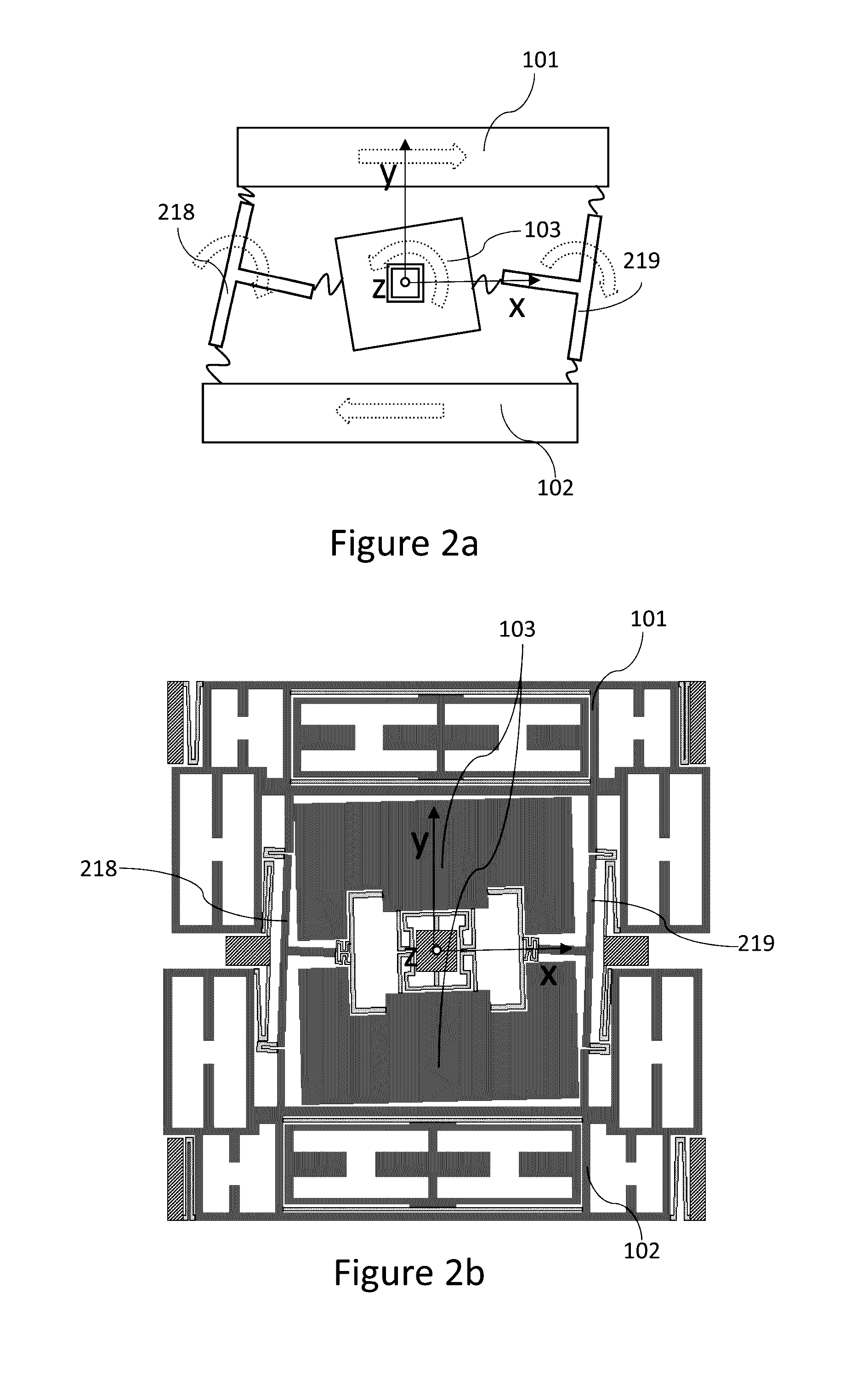Vibrating micro-mechanical sensor of angular velocity
a micro-mechanical sensor and vibration technology, applied in the direction of speed measurement using gyroscopic effects, instruments, surveying and navigation, etc., can solve the problems of gyroscope devices, rate signal noise, rate offset instability, etc., and achieve the effect of reducing problems
- Summary
- Abstract
- Description
- Claims
- Application Information
AI Technical Summary
Benefits of technology
Problems solved by technology
Method used
Image
Examples
Embodiment Construction
[0040]With reference to “plane of the device”, “plane of the structure”, “plane of the sensor”, “plane of the masses” or “plane of the rotor mass”, we mean a plane formed by inertial masses of the sensor device in their initial position when not excited to any movement. In the coordinates in the figures of this document, this plane corresponds to the xy-plane. Inertial masses of a physical device have a non-zero thickness in direction of the z-axis. The plane of these masses should be understood to comprise a flat plane comprised within the thickness of the respective referred structural elements.
[0041]The term “linearly moving mass” refers to a seismic mass intended to have a linear primary oscillation motion, i.e. a longitudinal oscillation along a given axis, to differentiate a seismic mass intended to have such linear primary oscillation motion from a seismic mass intended to have a rotating primary motion. The linearly moving mass may have various secondary, sensing motion mode...
PUM
 Login to View More
Login to View More Abstract
Description
Claims
Application Information
 Login to View More
Login to View More - R&D
- Intellectual Property
- Life Sciences
- Materials
- Tech Scout
- Unparalleled Data Quality
- Higher Quality Content
- 60% Fewer Hallucinations
Browse by: Latest US Patents, China's latest patents, Technical Efficacy Thesaurus, Application Domain, Technology Topic, Popular Technical Reports.
© 2025 PatSnap. All rights reserved.Legal|Privacy policy|Modern Slavery Act Transparency Statement|Sitemap|About US| Contact US: help@patsnap.com



